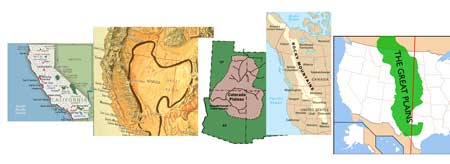Ecology of the American West
August 27, 2008 – 5:17 pmI recently got back from the nineteenth annual Darrouzet-Nardi family vacation. We visited four national parks and one national monument during the trip: Great Sand Dunes, Mesa Verde, Hovenweep, Bryce, and Zion. Pictures are here!
During this great trip, I finally comprehended the awesomeness of the “Grand Staircase.” The Grand Staircase is the geologic progression of sedimentary rocks that is continuous throughout the Colorado Plateau region. The lowest step is at the bottom of the Grand Canyon and the highest step is on the plateaus around Bryce Canyon. Zion Canyon neatly fills in the middle of the staircase between the Grand Canyon and Bryce. Here’s a picture of the staircase courtesy of wikipedia:
With my 27 years of living in and learning about the landscapes, geology, geomorphology, pedology, hydrology, biology, zoology, evolution, botany, anthropology, sociology, archeology, and of course, ecology of the American West, I have been dreaming about creating and teaching the ultimate Ecology of the American West field course.
The Grand Staircase made it click because I realized that it would make a fantastic unit for the course. Add a unit on the amazing diversity of the Ecosystems of California, and then perhaps on the Rocky Mountains and the Great Basin. Throw in the Great Plains and you have a nicely divided transect of some of the most spectacular country on Earth, from the hundredth meridian to the Pacific Ocean.

Make it a five month course, all of it on the road, approximately one month per region. No boring textbooks: we’ll read Abbey, Stegner, Reisner, McPhee, Muir, and Leopold! We’ll even collect some data and do some real science while we’re at it. Anyway, just a thought. I mean, who would let me teach something that awesome? . . .

Sorry, comments for this entry are closed at this time.